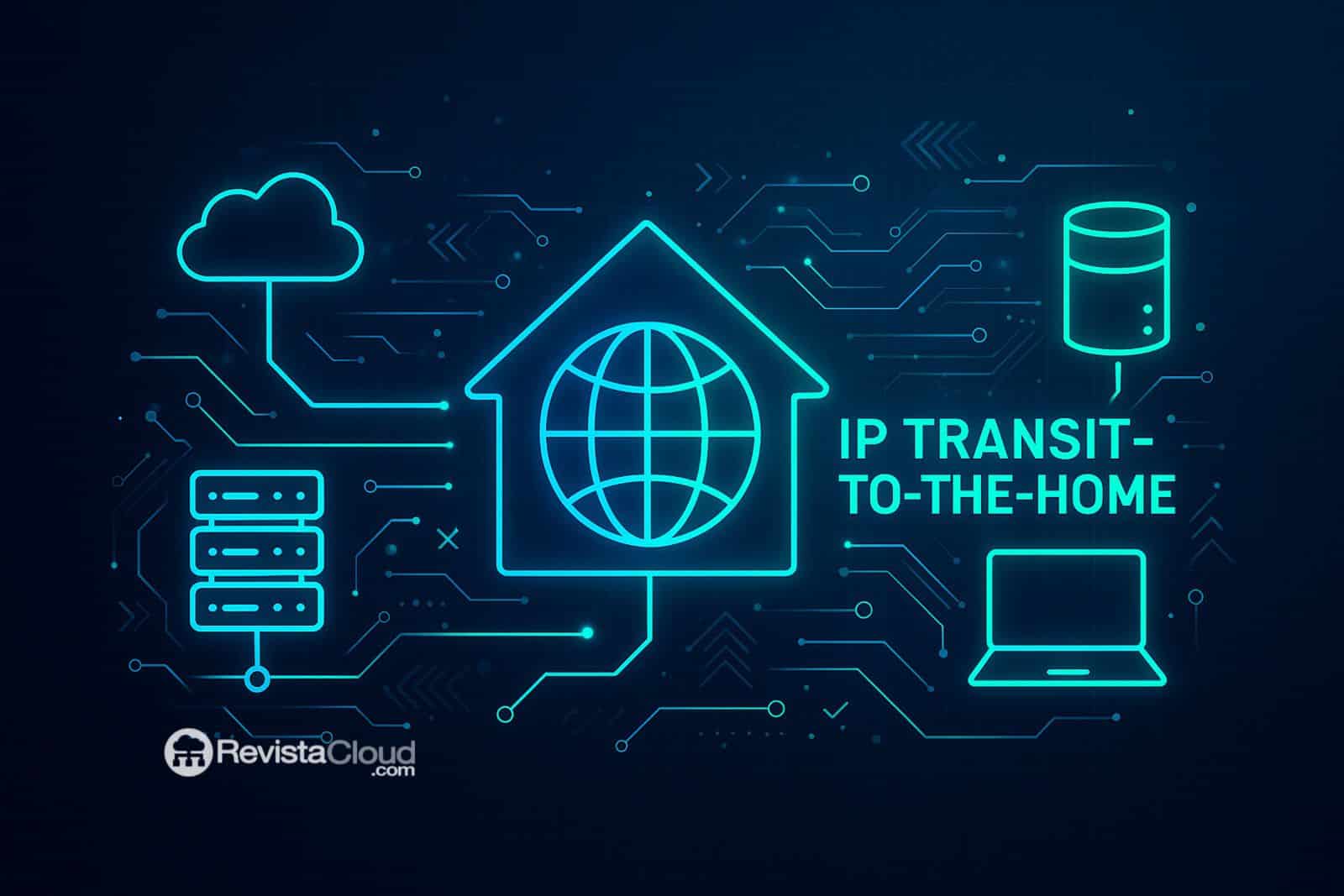The evolution of networks and the rise of digital services have rekindled interest in advanced connectivity solutions. One such solution, known as IP Transit-To-The-Home (IPTTTH), promises to deliver a network experience to homes that is similar to that of large enterprises or data centers. But what exactly does it entail, and what advantages could it offer in a home environment?
What is IP Transit-To-The-Home?
IP Transit-To-The-Home (IPTTTH) is a connectivity proposal that transfers the concept of IP transit—typically reserved for operators, ISPs, or companies with their own infrastructure—into the home environment. In simple terms, it consists of providing homes with direct access to the Internet backbone, with public IP addresses and connectivity without NAT (Network Address Translation), through a controlled and high-quality route.
Unlike traditional connections, which use CG-NAT (Carrier-Grade NAT) or shared IPs to save resources, IPTTTH offers point-to-point connectivity between the user and the IP transit provider, allowing for superior control and service quality.
How can it be implemented at home?
Although it is not yet a standardized solution among residential providers, some advanced users are already exploring ways to emulate it on a small scale. Here are some viable options:
- Purchase a block of public IP addresses (IPv4 or IPv6) through a specialized provider (for example, through an organization like RIPE or via an IP broker).
- Use a router compatible with BGP (Border Gateway Protocol), or an intermediary solution like Mikrotik or pfSense, that allows for dynamic routing between the IP transit provider and the home.
- Request IP Transit through a provider like Hurricane Electric or Cogent, which in some cases allows virtual connections over GRE tunnels, WireGuard, or similar solutions for home environments.
- Set up a tunnel to a server in a data center with real IP transit, and from there, redirect traffic using BGP or even establish a “mini-PoP” (Point of Presence) at home.
Advantages of IP Transit at Home
Although it may sound complex, the advantages of this model for advanced users or IT professionals can be significant:
- No CG-NAT: Full access to the Internet with public IPs, ideal for setting up home servers, surveillance systems, or managing IoT networks.
- Lower latency and optimized routes: By connecting directly to a transit provider, multiple intermediate hops are eliminated, improving response times in online gaming, video calls, or cloud services.
- Network autonomy: Allows experimentation with routing protocols, load balancing, and configurations similar to those of a business or ISP.
- Scalability and readiness for IPv6: Many IP transit providers offer blocks of IPv6, anticipating the transition to the new protocol.

What are the drawbacks?
Like any advanced solution, IPTTTH is not intended for the average user. It requires technical knowledge, appropriate hardware, and, in many cases, a justification of use to access public IP addresses. Additionally:
- The availability of direct transit providers is limited in residential settings.
- Costs may be higher than a traditional connection, especially if dedicated services, professional-grade routers, or IP blocks are included.
- Security responsibility: With a more open connection, the user must implement firewalls, filtering, and protective measures as a system administrator would.
Is the market ready for IPTTTH?
For now, IPTTTH is an emerging concept. Some technical communities, networking enthusiasts, and learning labs are already using it for lab tests or development environments. However, its mass implementation will depend on ISPs seeing a business opportunity in offering this service as a premium product for advanced users, small businesses, or remote professionals.
In a context where more and more households demand robust connections for work, study, or content creation, IPTTTH could solidify its place as the natural evolution of Internet access for those seeking performance, control, and freedom without intermediaries.

